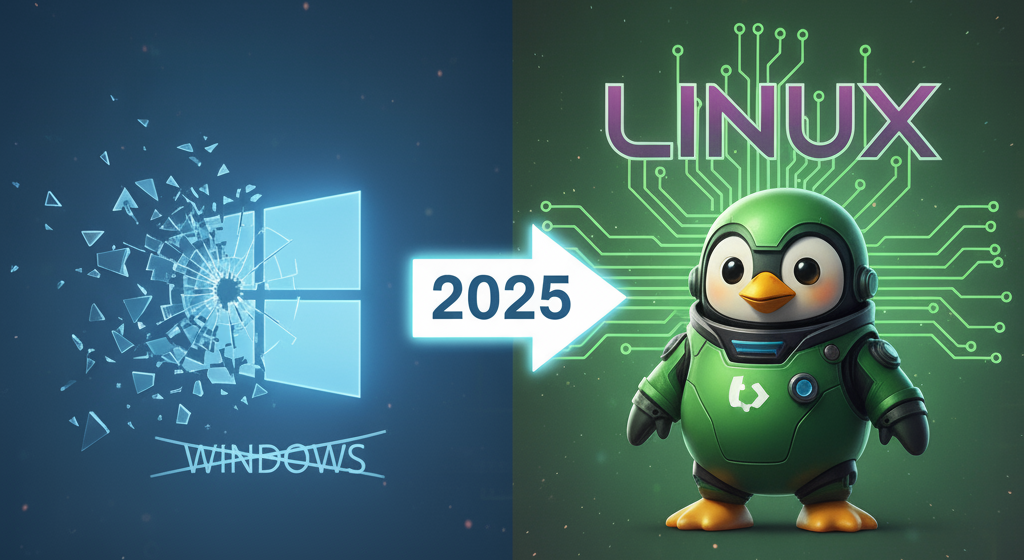Hey there, fellow Linux adventurers! Let’s talk about something crucial but often overlooked until it’s too late: backups. We’ve all heard the horror stories – a hard drive crash, an accidental rm -rf /, or even just a system update gone wrong, taking precious files along with it. Losing data hurts, whether it’s years of photos, critical work documents, or that meticulously configured system setup. Thankfully, the Linux ecosystem offers a powerful and diverse range of Linux backup software to keep your digital life safe and sound.
The flexibility of Linux extends to its backup solutions, offering everything from simple command-line utilities to sophisticated graphical applications. But with so many choices, how do you pick the right one? Don’t worry, that’s exactly what this guide is for! We’ll explore the world of Linux backup, look at different types of tools, discuss key features, and compare some of the most popular options available today. Our goal is to help you understand the landscape and choose the best backup software strategy for your specific needs. Let’s dive in and secure your data!
Why Bother With Backups on Linux?
You might think, “Linux is stable, I know what I’m doing, why do I really need backups?” While Linux is indeed robust, data loss can happen for numerous reasons beyond OS stability:
- Hardware Failure: Hard drives and SSDs don’t last forever.
- Accidental Deletion: We’re all human. A typo in the terminal or a misclick in a file manager can wipe out important files.
- Software Bugs or Failed Updates: Sometimes, software updates can introduce instability or conflicts.
- Malware/Ransomware: While less common than on other platforms, Linux is not immune.
- Theft or Physical Damage: Laptops get stolen, and accidents (like spilling coffee) happen.
A good backup strategy is your safety net, ensuring you can recover quickly and easily from any of these mishaps.
Understanding Backup Types (Briefly!)
Before diving into software, let’s quickly touch on common backup types:
- Full Backup: Copies everything selected, every time. Simple, but storage-hungry and slow.
- Incremental Backup: Copies only the files changed since the last backup (full or incremental). Faster and saves space, but restoration requires the last full backup plus all subsequent incrementals.
- Differential Backup: Copies only the files changed since the last full backup. Faster than full backups, uses more space than incrementals over time, but restoration only needs the last full backup and the latest differential.
Many modern Linux backup software tools use clever techniques like deduplication (storing identical chunks of data only once) which blur these lines but achieve similar goals: efficient storage and fast backups.
Key Features to Look For in Linux Backup Software
When evaluating options, consider these features:
- Automation/Scheduling: Can you set it and forget it? Regular, automated backups are crucial (
cronjobs are your friend here!). - Compression: Does it compress backups to save storage space?
- Encryption: Can it encrypt your backups to protect sensitive data, especially if storing offsite or in the cloud?
- Backup Destinations: Where can it store backups? Local drives, external drives, network shares (NFS, Samba), SSH servers, cloud storage (S3, Google Drive, Dropbox, etc.)?
- Versioning/Snapshots: Can you restore files from different points in time, not just the latest version?
- Ease of Use: How steep is the learning curve? Is it a command-line tool requiring scripting, or a user-friendly GUI?
- Deduplication: Does it intelligently store only unique data blocks to save significant space, especially for large or frequent backups?
- System vs. Data Backup: Is it designed for backing up personal files (
/home) or entire system snapshots for disaster recovery?
Popular Linux Backup Software Options
Let’s explore some popular choices, ranging from powerful command-line tools to easy-to-use graphical applications.
Command-Line Heroes
These tools are incredibly powerful and scriptable, favored by many experienced Linux users and system administrators.
1. rsync
- What it is: The venerable file-copying and synchronization tool. It’s not a full backup system on its own, but it’s a fundamental building block for many Linux backup scripts.
- How it works: Efficiently copies files locally or over a network (often via SSH). It excels at mirroring directories, transferring only the differences.
- Basic Usage:
# Backup home directory to an external drive (mounted at /mnt/backup)
# -a: archive mode (preserves permissions, ownership, timestamps, etc.)
# -v: verbose output
# --delete: delete files in destination if they no longer exist in source
rsync -av --delete /home/user/ /mnt/backup/user_home_backup/ - Pros:
- Ubiquitous: Available on almost every Linux system.
- Efficient: Transfers only changed data blocks.
- Flexible: Highly scriptable for complex backup scenarios.
- Great for mirroring directories or transferring files securely over SSH.
- Cons:
- No built-in versioning or snapshots (requires scripting or wrappers like
rsnapshot). - No built-in encryption or compression (though SSH handles encryption during transfer).
- Can be complex to set up a robust, versioned backup strategy solely with
rsync.
- No built-in versioning or snapshots (requires scripting or wrappers like
2. BorgBackup (Borg)
- What it is: A modern, powerful, and feature-rich Linux backup software focused on efficiency and security.
- How it works: Uses deduplication to store only unique chunks of data, significantly reducing storage space. It also offers compression and authenticated encryption. Backups are stored in repositories.
- Key Features: Space-efficient deduplication, client-side encryption, compression (lz4, zlib, zstd), mountable backups (FUSE), remote backups over SSH.
- Basic Usage:
# Initialize a new repository (do this once)
borg init --encryption=repokey /mnt/backup/myborgrepo
# Create a backup (archive)
# ::{hostname}-{now} creates a unique archive name
borg create --stats --progress /mnt/backup/myborgrepo::{hostname}-'{now:%Y-%m-%d_%H%M%S}' /home/user /etc
# List archives in the repository
borg list /mnt/backup/myborgrepo
# Restore files
borg extract /mnt/backup/myborgrepo::myhost-2025-04-16_112000 /home/user/Documents - Pros:
- Excellent space savings via deduplication.
- Strong security with authenticated encryption.
- Flexible compression options.
- Mature and well-regarded.
- Backups can be mounted for easy browsing.
- Cons:
- Command-line only (though GUI wrappers exist, like Vorta).
- Steeper learning curve than simpler tools.
- Repository needs occasional maintenance (
borg compact,borg check).
3. Restic
- What it is: Another modern, secure, and efficient backup software solution, often compared to Borg.
- How it works: Also uses deduplication, encryption, and compression. A key difference is its strong support for various backend storage types out-of-the-box, including many cloud services. Backups are stored as snapshots in a repository.
- Key Features: Deduplication, encryption, compression, multiple backends (local, sftp, S3, Backblaze B2, Google Cloud Storage, Azure Blob Storage, etc.), snapshots, mountable backups (FUSE).
- Basic Usage:
# Initialize a repository on a local path
restic init --repo /mnt/backup/myresticrepo
# Initialize a repository on Backblaze B2 (example)
# export B2_ACCOUNT_ID="..."
# export B2_ACCOUNT_KEY="..."
# restic init --repo b2:your-bucket-name:/path/in/bucket
# Create a backup (snapshot)
restic backup /home/user /etc
# List snapshots
restic snapshots
# Restore the latest snapshot to a specific location
restic restore latest --target /tmp/restore-test --path /home/user/Documents - Pros:
- Excellent backend support, especially for cloud storage.
- Relatively simple command structure.
- Secure and space-efficient (deduplication, encryption).
- Easy snapshot management.
- Cons:
- Can be memory and CPU intensive, especially during initial backups or checks.
- Command-line only (GUI wrappers exist, like resticprofile).
- Deduplication might be slightly less aggressive than Borg’s in some scenarios.
Graphical User-Friendly Options
If the command line isn’t your cup of tea, or you prefer a visual approach, these tools are excellent choices.
4. Timeshift
- What it is: Primarily a system restore utility, similar in concept to Windows System Restore or macOS Time Machine. It focuses on protecting system files and configurations.
- How it works: Creates incremental filesystem snapshots using
rsync(default) or Btrfs snapshots (if using a Btrfs filesystem). It’s designed to roll back system changes, not necessarily backup personal data. - Use Case: Recovering from botched updates, driver issues, or configuration errors that make your system unstable or unbootable.
- Pros:
- Very easy to use graphical interface.
- Excellent for system-level recovery points.
- Supports scheduling.
- Integrates well with Btrfs for near-instant snapshots.
- Cons:
- Not designed for backing up personal files in
/homeby default (though configurable, it’s not its primary purpose). rsyncmode can consume significant disk space over time if many snapshots are kept.- Limited destination options (primarily local drives).
- Not designed for backing up personal files in
Important: Use Timeshift for system protection, but combine it with another tool for your personal data!
5. Déjà Dup
- What it is: A user-friendly graphical backup tool, often included by default in GNOME-based distributions like Ubuntu and Fedora. It acts as a frontend for the powerful
duplicitycommand-line tool. - How it works: Creates encrypted, compressed, incremental backups based on
duplicity. It guides users through setup and scheduling. - Key Features: Simple interface, encryption (GnuPG), compression, scheduling, support for local folders, network servers (SSH, Samba, NFS), and cloud storage (Google Drive, Nextcloud).
- Pros:
- Very easy to set up and use, ideal for beginners.
- Good integration with the GNOME desktop.
- Supports encryption and various local/remote/cloud destinations.
- Automated scheduling is straightforward.
- Cons:
- Relies on
duplicitywhich can sometimes be slow or have quirks. - Less space-efficient than Borg or Restic (uses traditional incrementals, not block-level deduplication).
- Fewer configuration options compared to command-line tools.
- Relies on
Other Notable Mentions
- Clonezilla: Not typical backup software, but excellent for creating full disk or partition images. Great for bare-metal recovery or cloning systems.
- Bacula/Amanda: Enterprise-grade, client-server backup systems. Very powerful and scalable, but complex to set up and manage, overkill for most desktop users.
- rsnapshot: A wrapper around
rsyncthat uses hard links to create space-efficient, snapshot-style backups. Good if you likersyncbut want easy versioning.
Choosing the Right Linux Backup Software For You
There’s no single “best” tool; the ideal choice depends on your needs:
- For beginners needing simple personal file backup: Déjà Dup is a great starting point due to its ease of use and integration.
- For protecting system files and recovering from bad updates: Timeshift is fantastic (use in addition to personal data backup).
- For experienced users wanting maximum space efficiency and security (CLI): BorgBackup is a top contender, especially for local or SSH backups.
- For users needing robust cloud storage integration (CLI): Restic excels with its wide range of backend support.
- For basic mirroring or custom scripting: rsync remains a reliable workhorse.
Consider:
- Your technical comfort level: CLI vs. GUI?
- What you need to back up: Just
/home? System files? Everything? - Where you want to store backups: External drive? NAS? Cloud?
- How important are space efficiency and encryption?
Conclusion
Backing up your data on Linux doesn’t have to be complicated. From the fundamental power of rsync to the modern efficiency of Borg and Restic, and the user-friendliness of Déjà Dup and Timeshift, there’s a Linux backup software solution for everyone.
The most important step is to start. Don’t wait for disaster to strike. Pick a tool that seems like a good fit for your needs, set up a regular schedule (automation is key!), and test your restoration process occasionally to ensure it works. Even a simple backup strategy is infinitely better than none at all. Protect your valuable data, gain peace of mind, and keep enjoying the power and flexibility of Linux!
What backup software do you use on Linux? Share your experiences and tips in the comments below!
SEO Metadata Suggestions:
- Meta Description: Find the best Linux backup software for your needs! Explore popular CLI & GUI tools like rsync, Borg, Restic, Timeshift & Déjà Dup in this friendly guide. (158 chars)
- URL Slug:
best-linux-backup-software-guide - Image Alt Text Ideas:
Deja Dup backup settings window showing backup location options.Terminal showing rsync command progress for Linux backup.Comparison table of Linux backup software features (Borg vs Restic vs Deja Dup).







